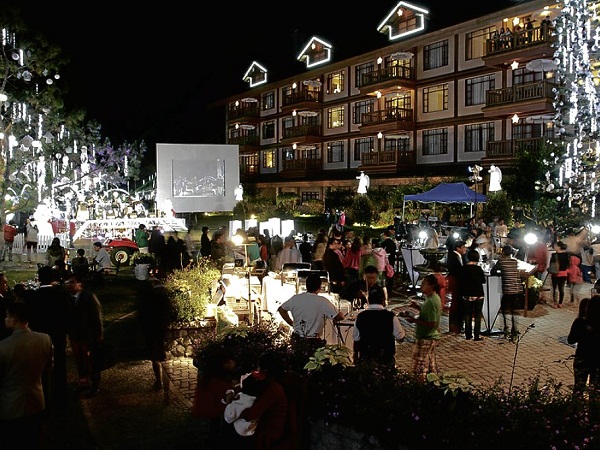
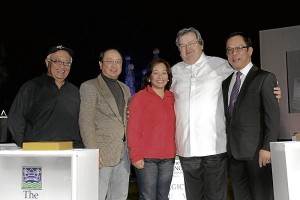
The Yuletide season officially started at The Manor with a recent Christmas lighting ceremony at the resort hotel’s Manor Garden. Dubbed as “Magical Christmas,” the event was hailed by Manor executives, led by German managing director Heinrich Maulbecker, as the first of its kind in the Baguio-based hotel’s young history.
It was no ordinary lighting ceremony, as the event also featured a synchronized light show and fireworks display that instantly dazzled and warmed the hearts of young and old alike, as they basked in the city’s nippy December weather.
Hotel guests feasted on free-flowing drinks and various dishes, including Filipino holiday staples such as bibingka and puto bumbong, prepared by chef Billy King and set up buffet-style just outside Le Chef, the Manor’s signature restaurant.
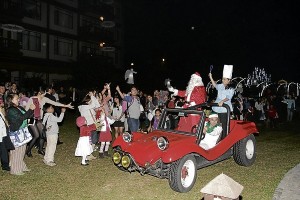
Dressed as cosplay characters, students from the University of Cordillera were among the evening’s featured performers. The Hive Band, a group of homegrown musicians, sang a repertoire of pop and jazz standards, including a number of OPM classics.
Hotel personnel, under the direction of Filipino general manager Ramon Cabrera, toiled for several days before the launch to produce their version of White Christmas, complete with dangling Tivoli and LED lights, pine trees with trunks wrapped in faux snow and larger-than-life lanterns shaped like snowmen.
Vignettes
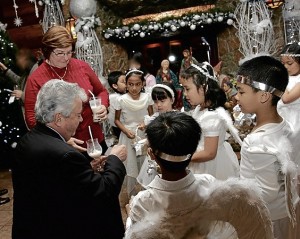
Each set of decorations was clustered into vignettes, with one featuring life-size circus animals under a makeshift tent. Thanks to piped-in Christmas songs, a gazebo lined with white Christmas lights and featuring a number of stools and sofas, including a pair of rocking chairs, doubled as a music room.
This year, the hotel shares the holiday cheer with special children belonging to A Child’s DREAM Foundation, Baguio’s first pediatric therapy center for kids with attention deficit hyperactivity disorder, autism, Down’s syndrome, cerebral palsy and other mental and sensory impairments.
Guests can extend their help by buying small holiday trimmings in the shape of angels, lanterns and Christmas trees. The trimmings would adorn the Manor’s Christmas tree at the lobby, while proceeds from their sale would go directly to the foundation.
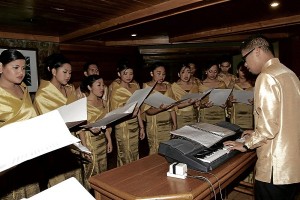
Nestled in the sprawling pine forest of Camp John Hay, a former American military camp used for rest and recreation, the four-story, 180-room Manor has become one of Baguio’s premier tourist destinations since it opened in 1999.
Maulbecker, who has been based in the Philippines for almost 30 years now, considers Baguio his second home. As GM of the ill-fated Hyatt Terraces, the first five-star hotel to open in Baguio, he lost his first wife, a Filipino, to the 1990 earthquake that devastated vast areas of Northern Luzon.
He knows the importance of tourism to the city’s economy. But unlike such tourist attractions as Boracay, El Nido and even Tagaytay, Baguio relies mainly on local tourists.
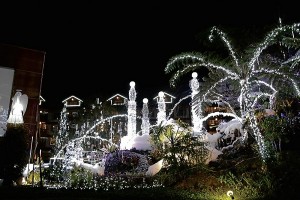
Foreign tourists, especially those living in temperate countries, have little incentive to go to Baguio for obvious reasons. But for Filipinos, Baguio is the next best thing there is to experiencing winter-like weather.
Foreigners, mostly Americans and Koreans, who frequent the Manor are already based in the city either as students or executives of several multinational companies with offices there.
Apart from being a university town, the city also has a thriving BPO industry, which explains the considerable presence of young people in their late teens and early 20s.
No memories
“Lately, we also have to deal with the challenge of attracting young Filipinos with no memories of Baguio while growing up,” he said. “How do you make them come and visit the city?”
To previous generations of Filipinos who regularly trooped to Baguio several times a year, especially when temperatures in Metro Manila and other parts of Luzon begin to soar in March and April, this may sound unthinkable.
But the advent of cheap and frequent flights to other destinations both here and abroad have lured regular and potential tourists away from Baguio.
“During the last three years, there have been more destinations coming out,” said Maulbecker. “People have more choices. And with budget airlines, they can now fly to Macau, Hong Kong and Kuala Lumpur.”
Meanwhile, commercial flights from Manila have stopped flying to Baguio for several years now. Maulbecker cites delays and scheduling problems, which made the service unpopular among travelers and unprofitable for airlines.
Flying to Baguio, because of its mountainous topography, depends a great deal on timing and actual visual cues. Flights are usually cancelled on rainy and cloudy days. The ideal time to fly in and out of Baguio was between 7 and 9 a.m., said Maulbecker. Flying in the late afternoon is definitely a no-no.
“There have been quite a number of times when flights got delayed, cancelled or even diverted somewhere else,” he said. “By the time you learn about the cancellation, you’ve already spent three hours at the airport. Had you taken the car or bus, you would have already been in Tarlac by then.”
So-called deluxe, nonstop trips offered by a number of bus companies have filled in the void left by airlines. Since these buses have their own restrooms, travel time from Baguio to Manila, and vice versa, has been cut short to less than five hours compared to the usual six.
When he first arrived in Baguio in the early ’80s, one of the first things Maulbecker did as a hotel executive was to work with locals in creating a tourist map of the city identifying places of interest. It became a hit among tourists.
“It wasn’t a walking tour,” he said. “The map was more of a reference material because people in the hospitality business then assumed that everyone knew where to go and what to do in Baguio. For the poor tourist, that wasn’t always the case. We called it ‘Rediscover Baguio.’”
Even now, there will always be a constant need for tourists to rediscover Baguio. And people at the Manor are doing their best to make sure that they do.








































